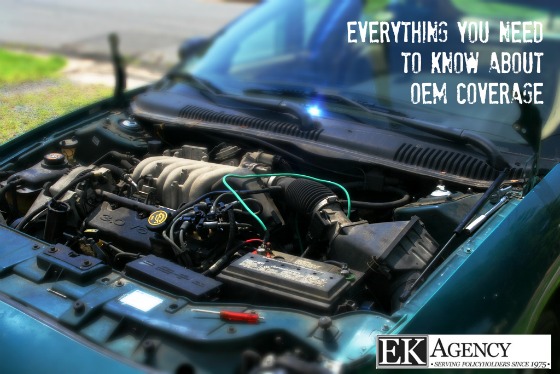
If you get into a car accident, what do you replace the damaged parts with?
Will any old part do, or should you replace with Original Equipment Manufacturer (OEM) parts?
Does it matter?
And, more importantly, what does your insurance cover?
You may think you need to replace with original parts, but that's not always the case. Or the most economical. Here's what you should know:
Unless you're a car enthusiast, you won't notice a difference.
According to the Consumer Insurance Guide, OEM parts are essentially the same panels and parts used to originally build a vehicle, while third-party manufactured -- referred to as "aftermarket" -- parts are engineered copies based on the exact same design specifications. Auto enthusiasts argue that there’s no substitute for OEM parts in terms of fit and finish, while insurance companies tend to prefer use of aftermarket components as a cost-saving measure. You probably won't notice a difference.
Aftermarket parts save $$ for insurance companies -- and consumers!
To keep insurance premiums down, most companies write estimates using the most cost-effective (yet safe) solutions. As a result, an estimate may include using a mix of OEM or non-OEM parts, and is based on each claim, the vehicle, the availability, type and cost of parts. According to the National Association of Mutual Insurance Companies. aftermarket parts are 26-50% less expensive than OEM components -- and that savings gets passed on to consumers! In fact, aftermarket parts help insurance companies reduce auto insurance premiums by an estimated industry-wide $3.25 billion per year.
Your car might have a mix of both (and that's fine)
Your repairs estimate will most likely state whether OEM or aftermarket parts are being used. According to the Insurance Information Institute (III), 39 states mandate repair estimates identify when aftermarket parts are being used, and 13 require an owner to give consent prior to their being installed. The III adds that the quality of aftermarket parts is generally just as good as OEM components -- plus most carry warranties that are often longer and are more widely available.
You'll pay for OEM parts
If a non-OEM part is indicated on an estimate but you'd prefer an OEM part to be used instead, you may have to pay the cost difference. To find out what your policy covers, call your agent today!
For more information and a brief video on OEM coverage, click over to Safeco.
Sources: Safeco, Safeco's original parts replacement coverage: what you need to know | Progressive, Car Insurance Myths | Consumer Insurance Guide, Does your auto insurance policy specify original or aftermarket parts?
Photo credit: saiberiac.
Tags : OEM parts, aftermarket parts, auto insurance, policy, cars, accident, car parts, car insurance
 August 17 at 8:00am · Share August 17 at 8:00am · Share
|